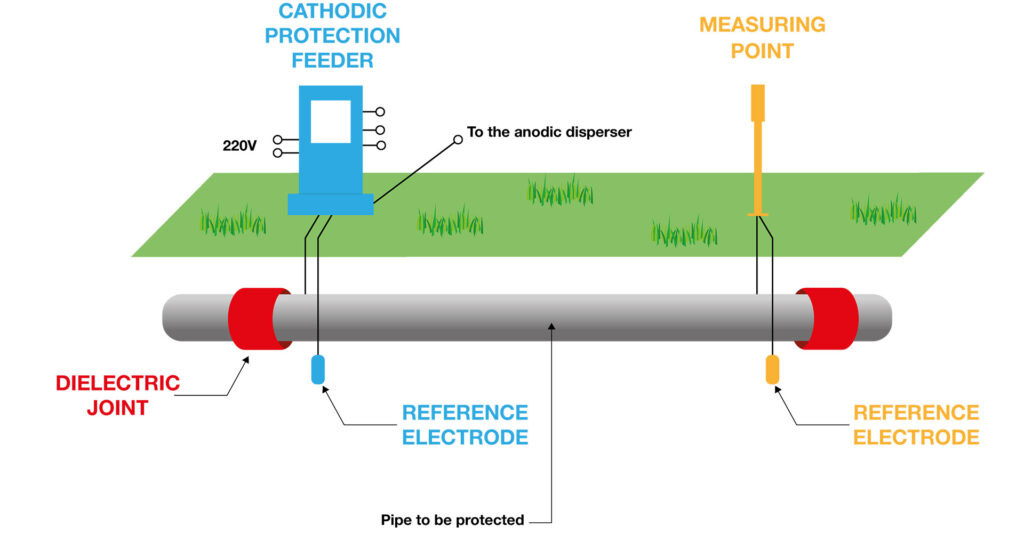Passive and active cathodic protection
Cathodic protection is an electrolytic corrosion prevention technique that is applied to metal components that are in contact with electrically conductive environments.
Essentially, this involves running a direct current between an electrode – the anode – and the surface of the component to be protected – the cathode. The current lowers the electric potential of the metal surface such that it significantly slows down corrosion.
Depending on the technology used, it is possible to implement passive cathodic protection with coatings and inhibitors, or active cathodic protection using sacrificial anodes or impressed current to counteract faults and gaps in the coating caused during installation or by deterioration.
After they are commissioned, these systems must be monitored to assess their effectiveness and to carry out any maintenance, if required. To this end, cathodic protection measuring points are identified on the distribution, transport, and storage networks during the design stage. By acquiring the tube-to-ground potentials of the pipeline to be protected, manual checks can be scheduled on the measuring points. These can be replaced or supplemented by the installation of electronic devices capable of continuously acquiring the potentials and sending them to a data collection centre that automatically analyses the parameters and, where required, fulfils the network remote control obligations by means of alarm signals that allow the anomaly to be identified and quickly resolved.

Cathodic protection applied to metal pipes

